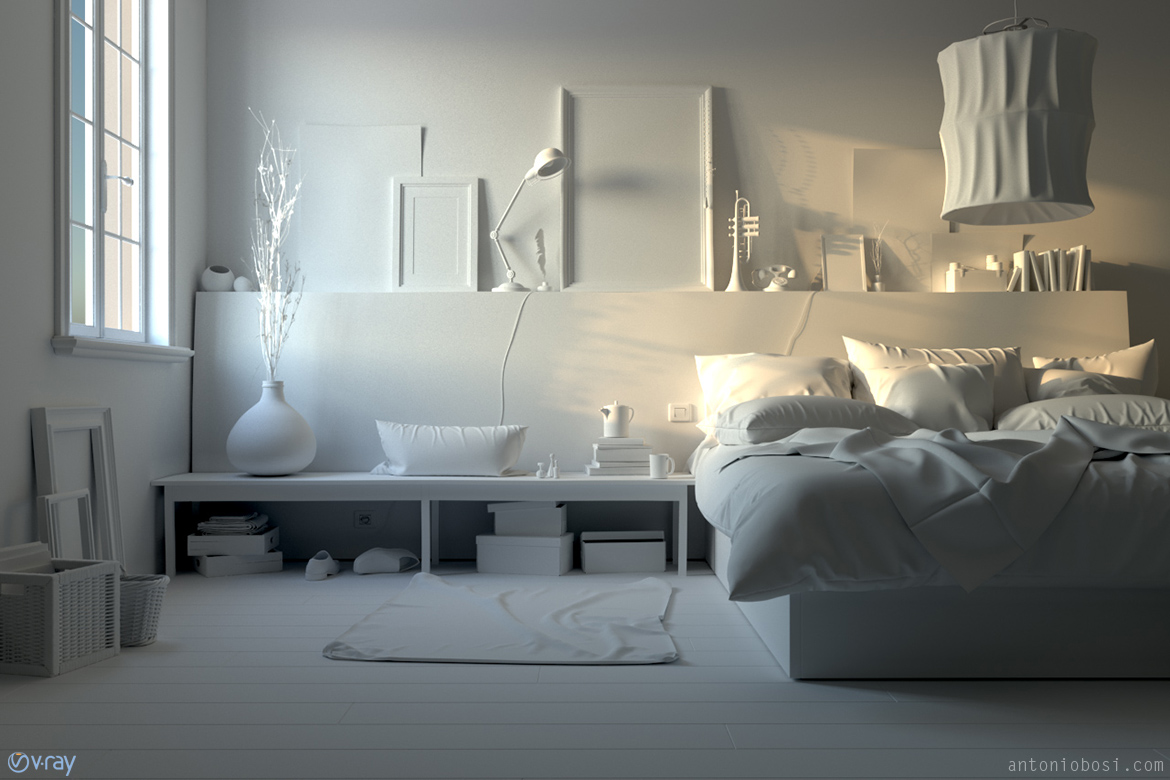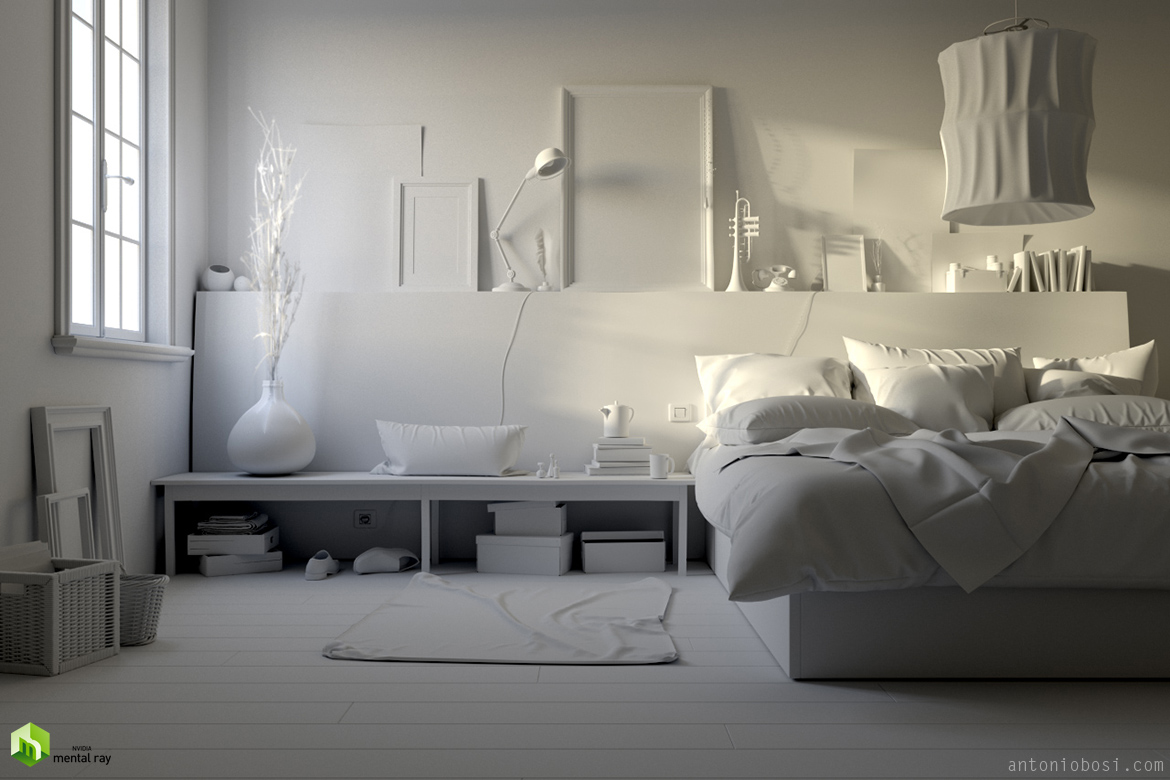
The good old Mental Ray did some big steps toward modernization with the 2017 release. Now it has a more efficient IPR, a brand-new GI engine (GI Next) and a more user-friendly interface. On the other hand the render engine market is full of CPU and GPU alternatives to Mental Ray, but the oldest and most feared competitor is still V-Ray. Who wins the render engine battle V-Ray VS Mental Ray 2017?
TYPE: maya guide
CATEGORY: Render Maya, Mental Ray, VRay Render, VRay vs Mental Ray
INTRO
After the NVIDIA anticipations about the departure of Mental Ray and iray rendering as integrated render engines for Maya and 3SMax, many users started to ask themselves what could be the best render engine to pick for their renders.
The battle Mental Ray VS V-Ray started many years ago and it seems that v-ray won in any aspect so far. Mental Ray had a very slow development in the last 4-5 years and it didn't get any exciting new feature or update. Anyway Mental Ray 2017 puts on the table some very good features at a cheaper price than V-ray. We are going to compare these render engines in various aspects, this is a work in progress review, so I will add more tests in the future.
Let's present the contenders:
MENTAL RAY
Mental Ray is a feature-rich, programmable, biased ray-tracing render engine. It has been used by the industry and professionals for over 28 years (the first release have been built in 1989 by Mental Images), Mental Ray has become a standard for photo realistic rendering across the film, visual effects, and design industries (Hulk, The Matrix Reloaded & Revolutions, Star Wars: Episode II – Attack of the Clones, The Day After Tomorrow and Poseidon are just few examples of products made using Mental Ray). In 2003 Mental Images was awarded an Academy Award for their contributions to the mental ray rendering software for motion pictures.
Mental Images was bought in December 2007 by NVIDIA, trying to bring some freshness to the old Mental Ray. We saw concrete results just in 2015 when the new GI NEXT was implemented. With this new GI model, Mental Ray can use the power of CUDA to compute the indirect/global illumination on GPU. Anyway a big part of the render computing is still CPU based, I hope to see some big steps toward the full GPU utilization.
V-RAY
V-Ray is probably the most famous and used render engine nowadays. It is developed by Chaos Group (Bulgarian: Хаос Груп), a Bulgarian company based in Sofia, Bulgaria, established in 1997. V-Ray is used in media, entertainment, and design industries such as movie, industrial and product design, video games and architecture. It can use traditional biased Raytracing (global illumination, photon mapping) or Brute Force unbiased algorithms. You can use V-Ray with almost any 3d software thanks to their very well written plugins. V-ray also has its own GPU render engine (V-Ray RT) used for IPR renders. I'm going to test V-ray 3.4
THE TEST
I tried to make the overall scene and light setup very simple, just to reduce the number of factors that could enter in the game. Whenever possible I used the same Maya light primitives, I've also put any light source in the same position and with the same intensity. Obviously the rendered images are not identical because any render engine interprets the lights and materials in its own way. No post processing. V-Ray version 3.4, Mental Ray version 2017.12, 3.14.4.6.
HARDWARE SETUP
I used an average pc: CPU I7 2600k @ 4.4GHz (to give you and idea of its compute power the Cinebench R15 Score is 758), 32GB DDR3, Nvidia GTX 1060 6GB, SSD 500gb. Win 10 pro 64 bit
FIRST TEST: INTERIOR RENDER
Same scenario for both render engine: Sun&sky + area light. The scene consists of 3M vertices, plain polygons, 3 diffuse bounces, no caustics, SSS, dispersion effects, hair or fur. I kept the environment pretty flat to make us clearly see and compare both noise and render quality. GI-NEXT for Mental Ray, BF + LC for V-Ray. 1 hour of render.


At glance the two renders seems identical. Anyway if you take a closer look you can see some significant differences

In 1 hour of render Mental Ray delivers a much detailed GI compared to V-ray, it is just a little noisy in the dark areas but it is not so noticeable. The contact shadows rendered by Mental Ray are far more realistic: using the old Final Gather the overall look was similar to v-ray, but using the brand-new GI-Next we can achieve the level of detail of a Brute force render with the speed of the famous V-ray Light Cache, in this particular interior render scenario. To achieve the same detail in V-ray I probably need to use BF + BF but the render would take a whole day!
CONCLUSIONS
Mental Ray and V-Ray are two very similar render engines, based on my experience I don't see any particular reason to switch from one render to another if you already have experience with one of the two.
V-ray have some unique shaders to do special effects (like architectural slices), dirty and curvature maps, but Mental Ray have the revolutionary MILA shader, which is an amazing shader for pro artists. V-ray has its own external render window (V-Ray framebuffer) where you can do some color correction .
V-Ray is much faster when doing full GI IPRs (V-ray uses the dedicated GPU renderer Vray-RT which is similar to Nvidia IRay), Mental Ray suffer of long precalculation render time when GI is on (FG or GI-Next) so you can basically use IPR only disabling GI .
Mental Ray has a much more detailed GI compared to the smooth V-Ray's Irradiance/Light Cache, this is a huge difference for final-production quality renders: Mental Ray delivers more detailed and realistic images.
V-Ray has a lot of tutorials and documentation but nowadays Mental Ray 2017 is simpler to learn than V-ray: I know, it seems incredible but Nvidia's devs reduced the options to the minimum, and they did a very good job!
Mental Ray also support any native Maya feature (fur, x-gen, fluids, volumetrics, particles, optical FXs, etc...), where V-ray often relies on 3rd part plugins.
Mental Ray is cheaper (about $250,00 / year) than V-ray, and you need to pay it just if you need batch renders, it is free for still images. Mental Ray and V-Ray can do both great renders, they can do high-end production renders, just try them and understand what is more comfortable for you.
Fell free to share your opinion and your experience in the comments below!
Antonio
Related guide: Arnold Render vs Mental Ray 2017







3 thoughts on “V-Ray Vs Mental Ray: which is the best render engine?”
Yo empece con mental, hace unos años uso vray, creo que los dos son buenos, tal ves un poco mas exacto y mas calidad mental, pero vray es mas rapido y genera renders mas organicos y calidos,. los dos son geniales, pero hoy en dia la velocidad es un punto grande a favor de vray
😮 Whaou, it seems that mentalray is more ‘exact’, and accurate with physical laws, but it also require too much render time due to the calculations (it takes time to display an exact physical result). But some things that lacks in vray, is the simplicity. When it comes to the building of materials, you soon get headsick. But what makes me prefer vray is that I’ve been using it for years, and that it can uses CPU/GPU rendering, as mentalray.
But I’m also trying an evaluation version of Keyshot (the Luxion engine, a standalone one), it’s quite strange, as you have to import your scene into it, but the render is speedy, and the building of materials seems easy. Also it lacks the integrated part, which lets you get a preview of your work in your 3D modeling software.
I’ve let down Iray, which uses too much ressources, and is ‘too exact’, so you have too wait too long, before the lux-noise (like seeing an image through a dusty window) gets cleared.
And thanks for this comparison, it makes us choose which render engine we shoold use. I do interior scenes with humans in it, so vray is for me the better choice (balance between quality/render time).
Mental ray is not so inferior to both V ray and Arnold, so, I am going to stick with it for a very long time. I am keen on pairing Mental ray and Arnold. Arnold would be my 2018 new hot renderer.